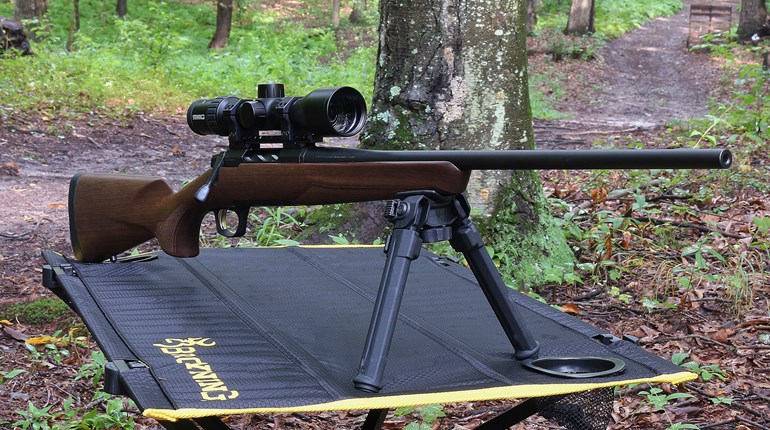
There was a time when the presence of a vertical foregrip on a carbine or rifle was considered an oddity—an exotic feature often reserved for iconic submachine guns like the M1921 Thompson "Chicago Typewriter," the bizarre-looking Owen and the deluxe version "the plumber's nightmare," the Mark V STEN.
Despite its exclusive origins, the vertical foregrip has undergone a tremendous resurgence over the past several years—so much so firearm enthusiasts are hard-pressed to walk the aisles of a gun show without spotting modern versions of the original "open-bolt accoutrement" festooned on a variety of over-encumbered black rifles.
Although the lineage is apparent when examining the plethora of contemporary counterparts, Magpul's Angled Fore Grip 2 (AFG2) boasts a design that not only sets it apart from the others, its enhanced ergonomics put it in a league of its own.

When using a vertical foregrip, shooters typically wrap their thumb around it, placing the web of skin between their thumb and index finger behind it. This results in varying wrist pronation during shooting, which can lead to inadequate control and poor recoil management.
Measuring slightly less than 2 inches tall and less than 5 inches long, the AFG2 is designed to serve more like a hand stop, unlike traditional vertical foregrips that require a broomhandle-style hold (i.e. hand fully encircling the column). This change in design occupies more real estate on your accessory rail, but the AFG2's larger footprint isn't without advantage. A change in grip angle moves the support hand over the center axis of the rifle—closer to the bore—offering greater stability, which translates to enhanced controllability during recoil.

Smaller and narrower than its predecessor, the AFG2's streamlined size enhances compatibility with a wider variety of accessory mounts and rail systems. Capable of interfacing with mil-spec 1913 and STANAG 4694 rails, the AFG2 consists of a three-piece design including two interchangeable finger shelves: an A1 smooth panel and another with an A2-syle finger nub, providing a nice touch of modularity-inspired customization. Swapping the inserts involves removing three Allen-head screws and separating the AFG2 halves. While it may sound cumbersome, the process doesn't require any advanced degrees in dexterity and can generally be done in 1 to 2 minutes—the latter of which is reserved for gimpy gunscribes.
The AFG2 interfaces with a railed fore-end via a flat-head screw and nut that secures the grip in place, making for easy installation. However, given the degree of emphasis placed on high-speed, low-draw accessories and quick-detach capability in today's black-rifle market, I'm reasonably certain many QD addicts will likely be less than thrilled with the need to have a screwdriver handy and opt for either a finding a replacement thumbscrew or spending extra coin to affix a compatible throw-lever mount to it.

So how does the Magpul AFG2 handle? The first time I mounted it to the underside of a quad-rail handguard I detected an immediate enhancement with regard to controllability and comfort, which I chalked up to my support hand being in closer proximity to the rifle's bore. The product offers more stability than a traditional vertical foregrip, but there's also an added degree of comfort. I can't quite put my finger on the reason for this, but it is definitely there.
Although it may take up quite a bit of rail space compared to traditional grips, with a quad-rail handguard, mounting locations for accessories like laser-aiming devices and lights are still available at the 3- 9- and 12-oclock positions. I experienced no apparent lack of purchase while using the AFG2—and was able to successfully actuate a light's pushbutton endcap and maintain good light discipline.
While I don't pretend to understand the science behind ergonomics or consider Magpul's AFG2 a one-size-fits-all product, I know what feels good. Having said that, this product definitely has its mojo working for me. Best of all, given my heavy use of vertical foregrips, I experienced almost no learning curve as a result of the switch.
Installation may not make your black rifle look as cool as a "Chicago Typewriter," but looks aren't everything. Performance is king, and in my opinion, the Magpul AFG2 reigns supreme.





































